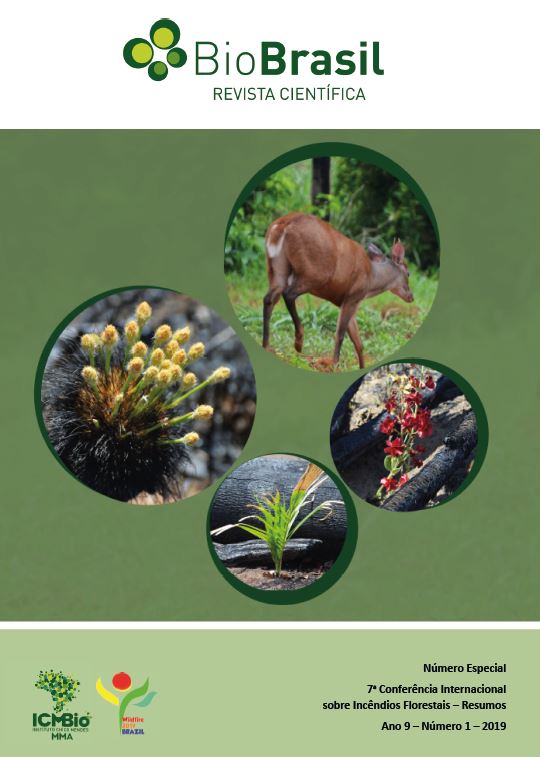Fire ecologies, land management, and human rights of indigenous peoples in central Brazil
DOI:
https://doi.org/10.37002/biodiversidadebrasileira.v9i1.946Palavras-chave:
Historical ecology, anthropogenic fire, subsistence burning, Indigenous lands, public policyResumo
Burning traditions are indispensable means of sustenance, territorial management, and cultural expression for Indigenous peoples and other smallholders. In some countries, fire interventions are developed in partnership with Indigenous peoples. The Brazilian federal government has recently undertaken several innovative and largely successful fire management projects with Indigenous participation, which have also received cautious criticism for employing hierarchical approaches and inadequately incorporating local perspectives. The Xavante ethnic group in Central Brazil is well known for burning cerrado vegetation during large group hunts associated with ceremonial events. Many Xavante view ritual gifts of game meat as vital for celebrating important social moments and maintaining cultural identity. Despite growing academic and policy attention to Xavante burning practices, they continue to be leveraged for cultural shaming in the sphere. News reports mischaracterize Xavante burning as a deforestation threat, while social media postings appropriate it in offensive ethnic slander. In this presentation, we explore interconnections between historical fire ecologies and human rights in two Xavante Indigenous reserves. Drawing on our own anthropological and interdisciplinary longue durée research with Xavante communities since 1990 and published media representations, we compare the fire histories of Pimentel Barbosa and Marãiwatsédé Indigenous Reserves in Central Brazil. We use our findings to evaluate representations of Xavante fire management and, more broadly, of territorial sovereignty as a human rights issue. Whereas the Pimentel Barbosa reserve showed negligible evidence of deforestation in conjunction with periodic hunting with fire, Marãiwatsédé suffered a series of highly destructive uncontrolled fires since its recent reoccupation after decades of deforestation by large cattle and soy ranchers. These contrasting fire profiles are largely attributable to divergent histories of land use, suggesting that effective fire control efforts begin with territorial sovereignty and should incorporate Xavante communities as equal conservation partners without subordinating them to the incongruent paradigm of hierarchical government authority.
Downloads
Referências
Downloads
Publicado
Edição
Seção
Licença
Copyright (c) 2019 Os autores mantêm os direitos autorais de seus artigos sem restrições, concedendo ao editor direitos de ção não exclusivos.

Este trabalho está licenciado sob uma licença Creative Commons Attribution-NonCommercial-NoDerivatives 4.0 International License.
Os artigos estão licenciados sob uma licença Creative Commons Atribuição-NãoComercial-SemDerivações 4.0 Internacional (CC BY-NC-ND 4.0). O acesso é livre e gratuito para download e leitura, ou seja, é permitido copiar e redistribuir o material em qualquer mídia ou formato.











